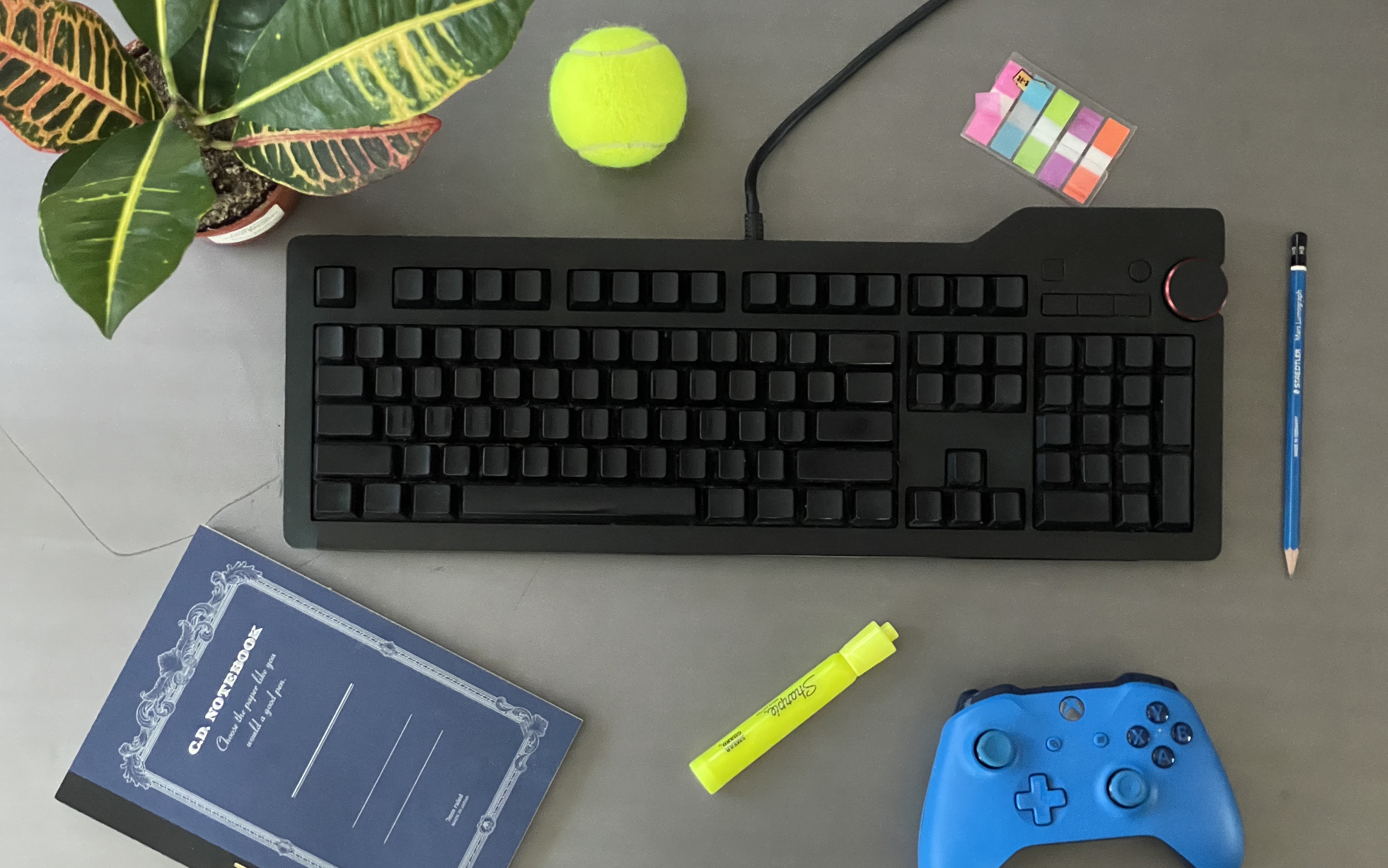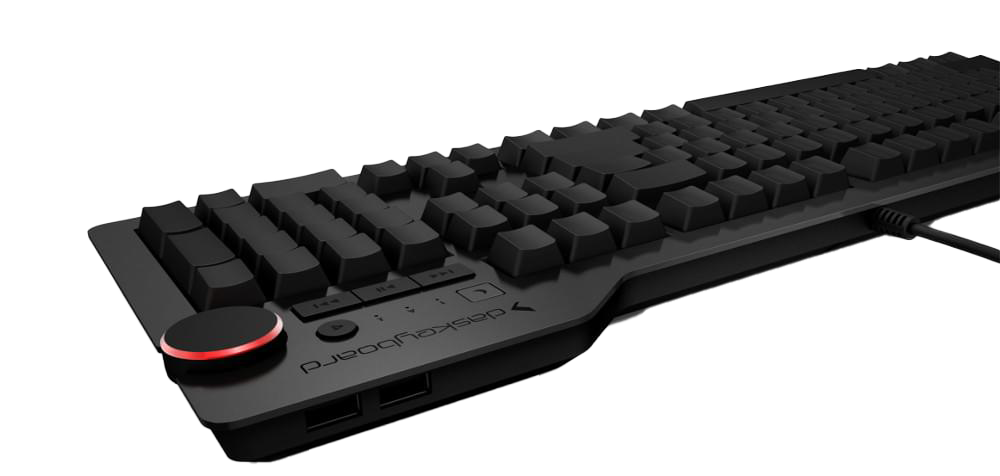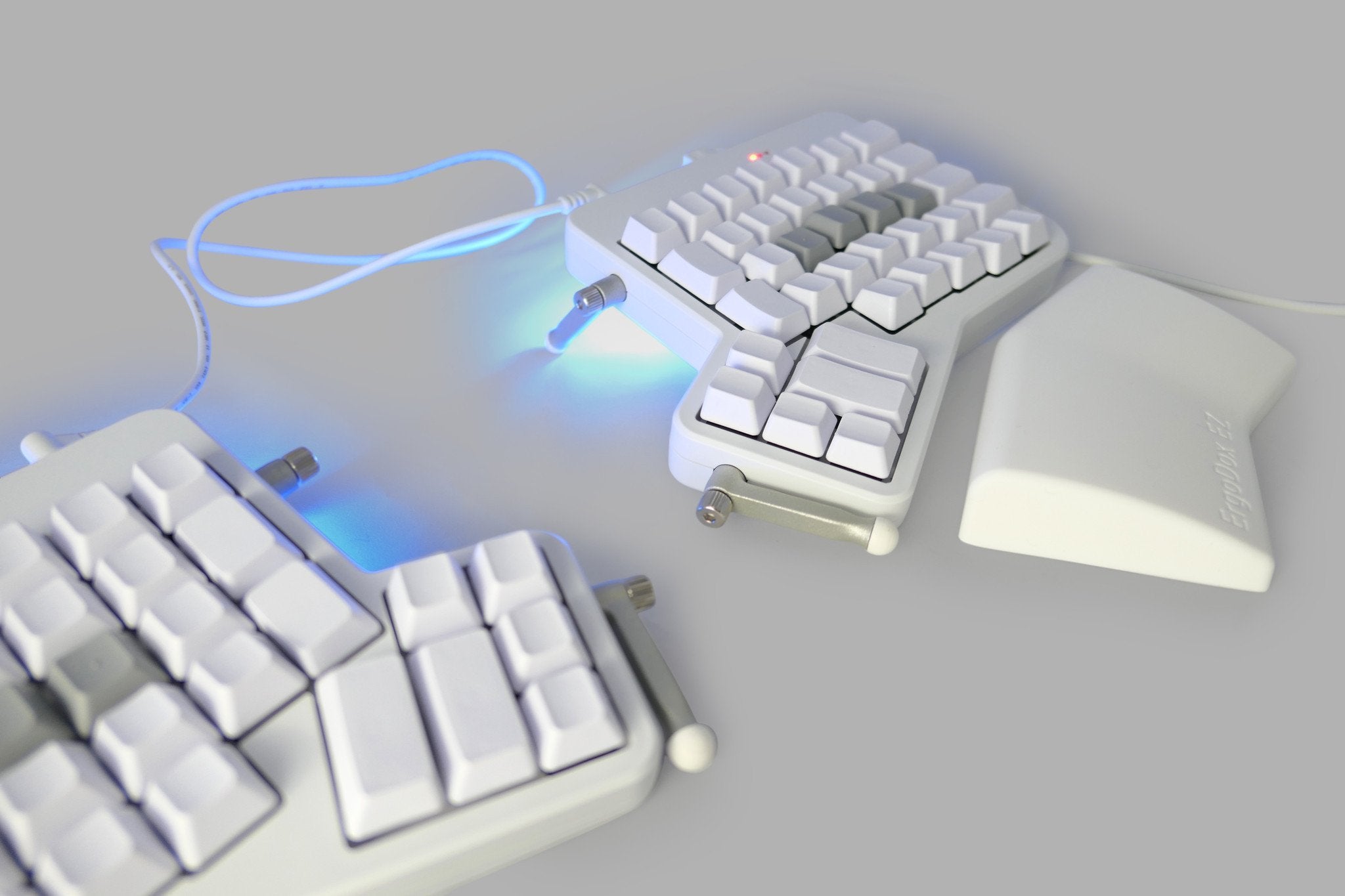After 5 years of using a blank keyboard, I don't recommend it
The pros and cons of flaunting your typing aptitude with unlabeled keycaps.

Sometime around 2017, I became disenchanted with the glowing Corsair and Logitech gaming keyboards I'd been using. They're good, but everyone has one. I wanted something niche: an apparatus unknown to generic typists, but inconspicuous enough not to instantly reveal my snobbishness for what it is.
My search ended with the Das Keyboard Ultimate, a $169 black mechanical keyboard with completely blank keycaps. There's no "QWERTY," no "WASD," no numbers or symbols. All of its keys are featureless cubes. I chose the Ultimate for two main reasons:
1. It looks cool. The Das Keyboard Ultimate is the opposite of the typical RGB light show. It's a black hole in your desk that says to passers-by: "This computer is not for you, because you are not of the midnight realm." Few keyboards look cooler.
2. I thought I could become a better touch typist by denying myself labels. And if my typing didn't improve, I could still claim that I bought the Das Keyboard Ultimate as a training tool, allowing me to own a novelty keyboard without admitting that its primary purpose was to be noticed.

I also liked the quality of the Das Keyboard 4 build: It's a sturdy slab with a big metal volume knob that clicks pleasantly when rotated. I recommend Das Keyboard's collection (the rest of which features normal keycaps), but after five years of using the Ultimate, I have finally retired it in favor of the Dygma Raise, a split ergonomic keyboard that emits RGB light through translucent key labels like all the gaming keyboards I left behind.
I miss the subtler aloofness of my Ultimate and its blank keycaps, but it probably won't ever be my main keyboard again. As I imagine you've guessed, both for gaming and typing, there are advantages to having little numbers and letters printed on your keys. After committing to the affectation that is using a Das Keyboard Ultimate for so long, though, I feel obligated to explain myself in more detail.
Why I stopped using a blank keyboard
1. I don't actually know where Num Lock is
At least, not if I think about it. I was fine when my brain was typing away on autopilot, but if I ever consciously went looking for a key, my fingers suddenly became lost in a dark forest. I'm still haunted by the time I forgot where the plus sign is for a good minute.
Keep up to date with the most important stories and the best deals, as picked by the PC Gamer team.
2. Typing passwords was annoying
I was never taught to position my hands on a keyboard according to the 'home key' nubs because I learned to touch type by getting into arguments in Yahoo! chat rooms. As a result, I sometimes struggled to place my hands in the right position on the first try, and the character masking in password fields meant I wouldn't notice that I was hitting the wrong keys until I'd mistyped the whole thing.
3. Typing numbers was also annoying
Back when I was a cashier, I could tap out credit card receipt totals on a ten-key calculator at the speed of an anime hacker, but I regrettably did not hold onto that numpad mastery. These days I pluck out two-factor authentication codes on the top number bar, and I never got good at doing it without labels. My ability to visually group objects is perhaps lacking, because I frequently had to count from the left or right to find the number I was looking for. The F keys were also problematic.
4. Its coolness is debatable
Custom keycaps weren't quite as popular back when I started using the Das Keyboard Ultimate, but I can't claim that I was on the cutting-edge of desktop fashion even then. Das Keyboard launched its first blank keyboard way back in 2005, declaring at the time that it was for "UberGeeks" only. Perhaps a few flecks of irony can be panned from that press release, but it's still perilously close in spirit to an aluminum novelty sign that says "Beware: noob slayer at work."
There are many ways for today's sophisticated typist to distinguish themselves. You can get side-print keycaps, for example, or keycaps that aren't blank, but look it from a distance. I came across the all-yellow Ducky pictured below while researching this article. You can't tell from most of the photos, but the keys are very faintly engraved. I desperately want to purchase it.

5. Default game keybindings could be rough
It is pretty easy to find WASD without looking, and an FPS player doesn't need labels to find any of the nearby keys. It was the right side of the keyboard that tripped me up.
While typing, I have no problem finding a key on the right side of my keyboard with my right hand. However, trying to hit 'M' with my left hand to open a game's map became a recurring irritation. I always seemed to press 'N,' then comma, and then 'N' again at least one more time.
I don't like having controls on the right side of the keyboard, so I eventually rebind things like 'M' for map and 'I' for inventory anyway, but the fact that I never got better at finding those keys became a recurring jab at my aptitude. Novelty controllers are only cool when the player demonstrates unusual proficiency. No one wants to watch someone play Dark Souls with a Guitar Hero guitar to see them die immediately like anyone else would.
6. I needed an ergonomic keyboard
After five years of doing all my work and gaming with blank keycaps, I've gotten pretty used to their nuisances. I don't think it's a good idea for most people, even good typists, but it wasn't that bad, and the only wear on my Das Keyboard Ultimate is some discoloration where my palms rest and a polished shine on the tops of the keycaps. (Pro: You don't have to worry about the labels rubbing off. Also, you can remove the keys for cleaning without worrying about where they go.)
In the end, wrist pain was my primary motivation for switching to a split keyboard. I'll write about it more in the future, but the Dygma Raise is mostly excellent, which it ought to be for $319.

One thing that bears mentioning now, though, is that one of the flimsy reasons I gave for picking up the Das Keyboard Ultimate has already been made flimsier by my new keyboard. My typing skill improved more in a month of using a split keyboard than it did from years of using a blank one. It turns out I was stretching my left index finger over to hit 'Y,' 'H,' and 'N', and the split has forced me to give up that part of my unorthodox method. I'm clearly faster now that I'm not wasting time contorting my left hand to hit those keys, which I doubt was helping my wrist, either. (They're both much better.)
For gaming, I also love being able to shove the right side of my keyboard out of the way so that I can position my mouse where I want. I really recommend trying a split keyboard if you can, especially if you experience any wrist pain, with the qualification that they're typically quite expensive.

Of course, I could always be arrogant and ergonomic at the same time: ZSA Technology Labs, a different maker of expensive split keyboards, offers blank keycaps on its ErgoDox EZ, a $325 board that looks like it belongs in a 2010s indie sci-fi film. I will not rule out the possibility that a future, back-on-my-bullshit version of myself will seek to own one of those.

Tyler grew up in Silicon Valley during the '80s and '90s, playing games like Zork and Arkanoid on early PCs. He was later captivated by Myst, SimCity, Civilization, Command & Conquer, all the shooters they call "boomer shooters" now, and PS1 classic Bushido Blade (that's right: he had Bleem!). Tyler joined PC Gamer in 2011, and today he's focused on the site's news coverage. His hobbies include amateur boxing and adding to his 1,200-plus hours in Rocket League.

